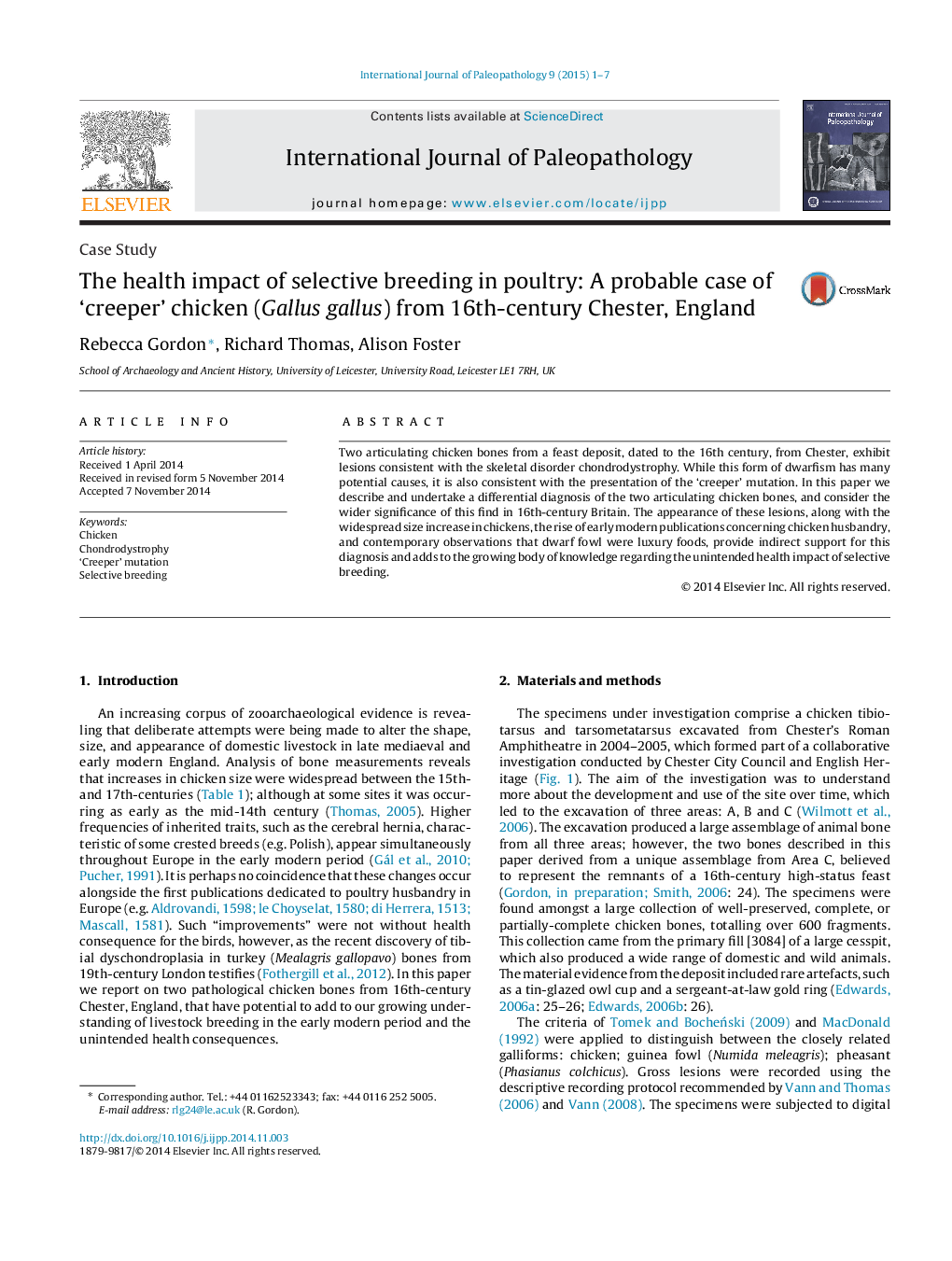| Article ID | Journal | Published Year | Pages | File Type |
|---|---|---|---|---|
| 101367 | International Journal of Paleopathology | 2015 | 7 Pages |
•We undertake a differential diagnosis of two articulating chicken bones.•Both specimens exhibit characteristics of chondrodystrophy and the ‘creeper’ mutation.•This case study adds to our knowledge about poultry breeding in 16th-century Britain.
Two articulating chicken bones from a feast deposit, dated to the 16th century, from Chester, exhibit lesions consistent with the skeletal disorder chondrodystrophy. While this form of dwarfism has many potential causes, it is also consistent with the presentation of the ‘creeper’ mutation. In this paper we describe and undertake a differential diagnosis of the two articulating chicken bones, and consider the wider significance of this find in 16th-century Britain. The appearance of these lesions, along with the widespread size increase in chickens, the rise of early modern publications concerning chicken husbandry, and contemporary observations that dwarf fowl were luxury foods, provide indirect support for this diagnosis and adds to the growing body of knowledge regarding the unintended health impact of selective breeding.
